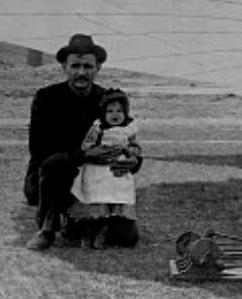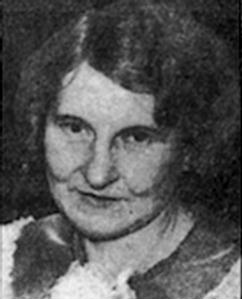|

 Up
Up 
 Whose
Whose
Conspiracy
Is This?

(You are here.)



  Need
to Need
to
find your
bearings?
Try
these
navigation aids:
If
this is your first
visit, please stop by:
Something
to share?
Please:



|
|
Available in Française, Español, Português, Deutsch, Россию,
中文,
日本, and others.
Another Opinion
 hose
who insist that Gustave Whitehead flew before the Wright brothers often
point to an agreement between the Wright Estate and the Smithsonian
Institution as evidence of a conspiracy to deny Whitehead the
recognition he deserves. This agreement, made in 1948, defines how the
original 1903 Wright Flyer is to be displayed. One of its provisions
says that should the Smithsonian “publish or permit to be displayed a
statement or label in connection with or in respect of any aircraft
model or design of earlier date than the Wright Aeroplane of 1903,
claiming in effect that such aircraft was capable of carrying a man
under its own power in controlled flight," then the Wright Estate may
reclaim the Flyer. hose
who insist that Gustave Whitehead flew before the Wright brothers often
point to an agreement between the Wright Estate and the Smithsonian
Institution as evidence of a conspiracy to deny Whitehead the
recognition he deserves. This agreement, made in 1948, defines how the
original 1903 Wright Flyer is to be displayed. One of its provisions
says that should the Smithsonian “publish or permit to be displayed a
statement or label in connection with or in respect of any aircraft
model or design of earlier date than the Wright Aeroplane of 1903,
claiming in effect that such aircraft was capable of carrying a man
under its own power in controlled flight," then the Wright Estate may
reclaim the Flyer.
This agreement
was the result of a long-running dispute between Orville Wright and
the Smithsonian. The Smithsonian had issued a report in 1914 that
the Langley Aerodrome, an aircraft designed by the former Secretary
of that institution, was the first airplane “capable” of flight
despite two failed attempts. The Smithsonian finally retracted and
apologized for the report in 1943 – 39 years later – and the
agreement was to keep them from backtracking. It had nothing to do
with Gustave Whitehead.
However, it is
true that the threatened loss of a national treasure is a
disincentive for the Smithsonian to publish that someone flew
successfully before the Wrights. Tom Crouch, Senior Curator at the
Smithsonian Air and Space Museum, has said as much in the articles
he has written and the lectures he has given. But it is not an
impediment. The Wright/Smithsonian agreement creates no barrier that
prevents the Smithsonian or any other institution or individual from
exploring this possibility. This is not the case for agreements
concerning Gustave Whitehead’s papers and effects.
In a recent web
article,
Five Agreements, historian Carroll Gray describes the
custodians of Gustave Whitehead’s personal papers as they were
transferred from the Whitehead family to author Stella Randolph to
William O’Dwyer and the Connecticut Aeronautical Historical Society,
and finally to the Fairfield Historical Society. Every time the
papers changed hands, the rules governing access to them became more
restrictive. “No use, study, reproduction, publication, or transfer
of any of the Whitehead memorabilia or files will be made by any
group, groups, person or persons having the apparent intent of
discrediting Whitehead or his work,” reads the first paragraph in
the agreement between Randolph and O’Dwyer. Successive agreements
have similar clauses. The last agreement, between O’Dwyer and
Fairfield Historical Society, adds a massive user fee requiring
“that an author receiving profits from a publication using these
materials pay a royalty of 60%” to O’Dwyer and the FHS.
These
restrictions on the Gustave Whitehead archives have two effects that
govern the type of people who may see these resources. The first is
obvious. Because the material may not be used to disprove the
aeronautical accomplishments Whitehead claimed, only those who
believe these claims may have access to the material. The second is
less obvious, but more insidious. To use this information, you must
give up more than half of your earnings. This massive royalty
effectively removes any incentive that a professional historian
might have for seeking Whitehead’s side of the story. Only true
believers with sufficient commitment to donate their time and money
will be allowed to see the relics. In a word, zealots. Consequently,
any reports generated from these resources come from people with the
least inclination to be objective.
The technique
by which we reconstruct the past – historiographics – puts great
emphasis on primary sources, specifically the correspondence,
diaries, reports, and other papers written by the historic figure
who is being studied. In the case of the Wright brothers, these
primary sources are located at several institutions, the Library of
Congress, the Franklin Institute, Wright State University, the
Dayton Public Library and others. In no case is their access
restricted; they are available to the general public. There are no
fees; many have been posted on the Internet, making them available
worldwide free of charge.
The primary
sources for the Gustave Whitehead story, however, are severely
restricted. Not even their whereabouts is generally known. Even if
you find the files and are permitted to see them, they are
ridiculously expensive to use. Scholars are left with only secondary
sources – conflicting newspaper articles and affidavits – to try to
resurrect Whitehead’s aeronautical career. In view of this, for
Whitehead supporters to accuse the Wright Estate and Smithsonian of
a conspiracy to suppress the truth is the very definition of
hypocrisy.
Nick Engler
August 8, 2013
More Information
-
O'Dwyer-Whitehead Research Collection at the Fairfield
Museum and History Center Library, Fairfield, CT.
-
Stella Randolph-Gustave Whitehead Collection at the Eugene
McDermott Library at the University of Texas, Dallas, TX. This
does not contain all the information in the O'Dwyer-Whitehead
Collection; it is Randolph's original manuscripts and research.
But like other archives concerning Whitehead, it too is
restricted.
|

Gustave Whitehead with his daughter Rose sitting under the wing of
Whitehead's aircraft No. 21.

Stella Randolph in 1936.
|